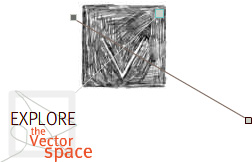Malperception
Editor's Introduction
"Close your eyes and imagine a color you have never seen before." This unanswerable challenge is a favorite of cognitive psychologist Donald Hoffman, as he seeks to reveal the limits of our perceptual apparatus. The conjunction of brain and sense organs is not, he argues, a matter of merely receiving information about the world around us and translating it into understandable information. Rather, our brains function as a kind of "reality engine," which allows us to construct the world according to perceptual conventions that sometimes directly contradict what our conscious minds know is true. This gap between what we "see" and what we know provides an extraordinarily fertile zone for experimentation, with implications that reach far beyond our ability to correctly identify colors to a zone of epistemological contention that includes cultural and historical meaning as well. But these are questions that the average scientist is often reluctant if not ill-equipped to address. Hoffman's collaboration with media Artist Perry Hoberman allows for an exploration of the intersection of perception and cognition that is at once playful and serious, exceeding the conventional boundaries of both clinical and artistic practice.
To explore this intersection, Hoberman and Hoffman posit a series of aberrant conditions that reveal the inner workings of the brain. While much of western culture continues to labor under the burden of rationalism and positivism -- fancy terms for outworn cliches such as "seeing is believing" -- the representational capacity of images, sounds and words seems to let us down at every turn. To what degree do factors such as expectation, enculturation and narrative inflect our most basic understanding of the world around us? Hoberman and Hoffman have each been pursuing these questions within their discrete fields of interactive art and cognitive science respectively for decades. Through their collaboration, the Malperception project affords the opportunity to examine both issues of perception and cognition and a provocative experiment at the intersection of art and science.



